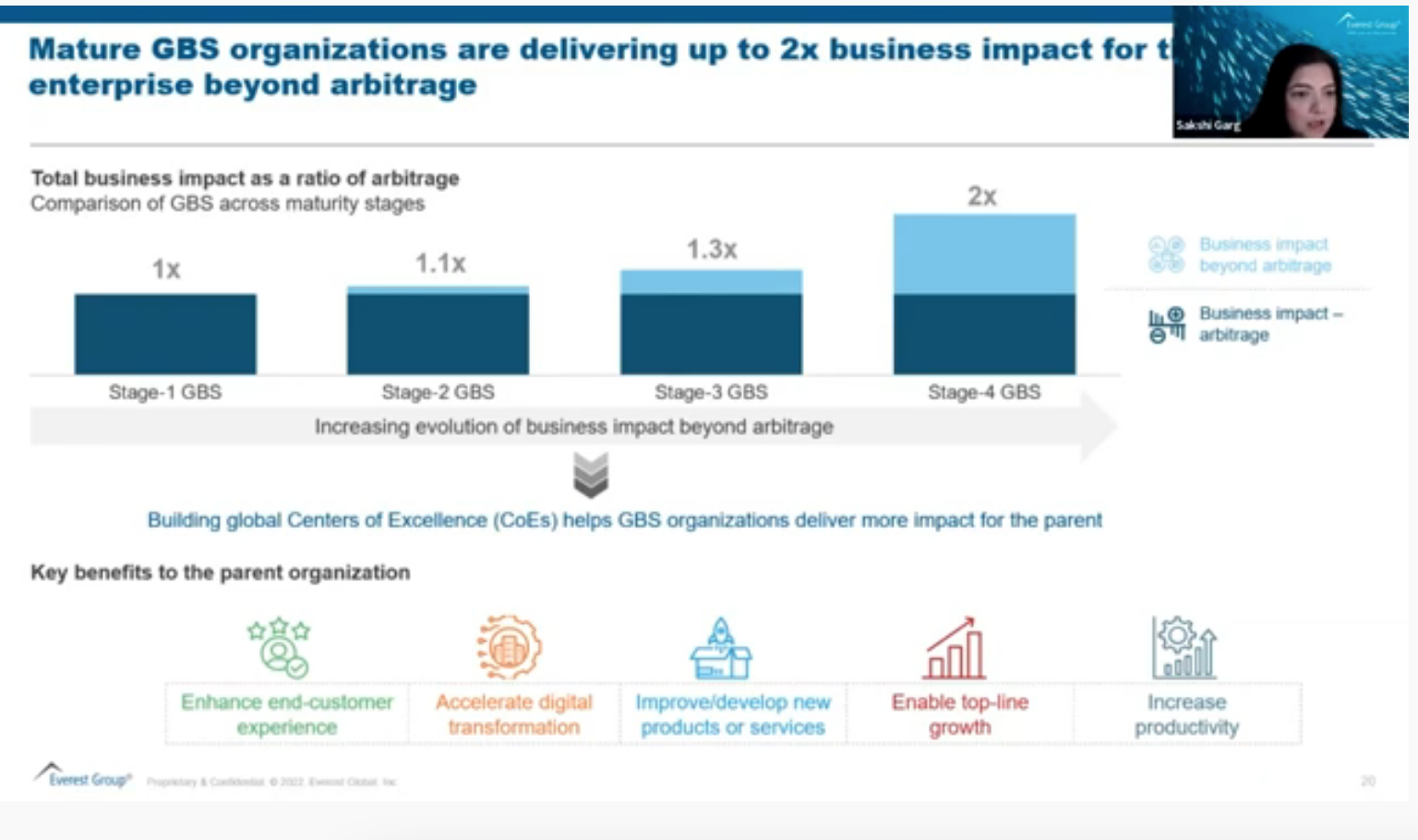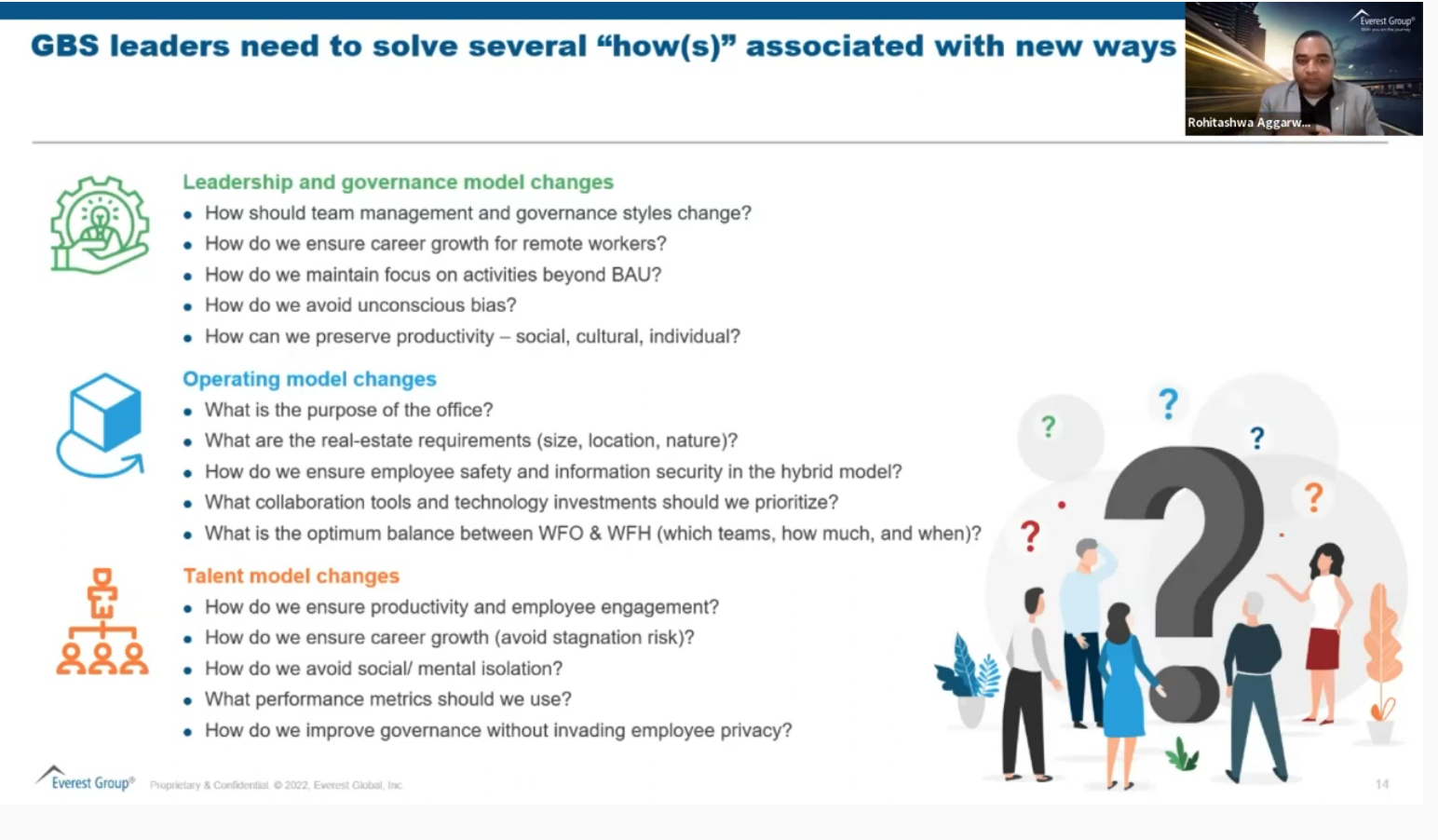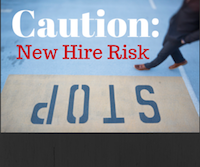Recruitment process outsourcing (RPO) companies that want to be successful in 2022 will need to provide value-added services to businesses, according to Everest Group research. RPO companies also need to deal with the talent shortage challenge while keeping costs down. They'll need to speed up their innovation plans and shift to a long-term hybrid working model. But the path to success has obstacles such as rising attrition, difficulty in finding project-ready talent, and rising inflation.
This blog post will discuss five valuable actions research experts at the Everest Group discovered that RPO service providers can take for success in 2022 and beyond. Keep reading to learn more!
Challenges Affecting RPO Companies
Michael Janssen, Chief Researcher at Everest Group, and Rohitashwa Aggarwal, Vice President of Global Sourcing at Everest Group, pointed out that three challenges will affect the success of most GBS (Global Business Service) organizations in 2022, including RPO vendors. The three challenges are:
-
The talent shortage
-
Global inflation
-
The currency exchange rate
The Talent Shortage
The talent shortage is affecting every organization, including RPO firms. People resigning and companies not finding role-ready talent have placed a lot of pressure on the talent management efforts of most firms.
Janssen and his colleagues have observed that the talent shortage is not going away soon. And the driving factor for its longevity is the decrease in the workforce population. North America and Europe have lost 2.4 million workers annually in the last decade.
Suggested Content: The Talent Shortage Reality
Aggarwal said that re-skilling and up-skilling current talent would play a vital role in companies navigating the talent shortage.
Global Inflation
Global inflation is negatively affecting labor and operation costs. Before the pandemic, global inflation was between 1 and 3 percent. Currently, it ranges between 4 and 7 percent.
Appreciation of Global Currencies
Compounding the problem of global inflation is the appreciation of international currencies. Historically, Aggarwal said that there'd been a continuous devaluing of global currencies. And GBS organizations like global RPOs have used that devaluation to soften the effects of in-country inflation. As a result, global firms could operate at the same cost level as their home headquarters.
However, the current shift towards the appreciation of global currencies has raised currency rates higher than in previous years. And the combination of the high valuation of currency and high inflation rates is not allowing global companies to benefit from the currency exchange rates as they did in the past.
So global inflation and appreciation of global currencies are acting as a double whammy on the overall operation costs of global firms, which affects talent costs, pricing models, and work models.
In 2022 and beyond, RPO service providers will need to broaden their already broad view of things. In other words, they'll need to be more strategic than they already are. From data gathered from GBS leaders worldwide, the Everest Group recommended five actions they can take to conquer the current challenges and be successful in 2022.
5 Actions RPO Companies Can Take for Success
Action #1: Shift to a Hybrid Work Model
The hybrid work model has become a preferred work model. But organizational leaders are a little jittery about the operation model itself because it creates uncertainty. But despite that uncertainty, Everest reported about 70 percent of the teams they surveyed are likely to work within the hybrid model.
To cut through the ambiguity of the hybrid model, Aggarwal listed several questions leaders should ask before shifting to the hybrid model. The questions centered around three perspectives. Those three perspectives include:
-
Leadership and Governance
-
Operations
-
Talent Integration
Action #2: Change Cost and Profit Expectations
Global inflation is affecting cost and profit expectations. Before the pandemic, labor costs rose as overall operating costs declined. The picture has shifted to where both labor and operating costs are rising. As a result, RPO service vendors won't be able to give their clients the same level of financial benefit they expect.
However, Aggarwal shared some controllable costs that organizational leaders can focus on to meet these new profit expectations.
One cost factor organizational leaders can focus on is talent retention and acquisition. Despite the talent shortage, there are some retention tactics RPO leaders can use to ensure their talent sticks with the company.
Another factor RPO vendors can control is the services they provide their clients. Giving clients more than traditional outsourcing services can help add value to clients beyond profit.
Action #3: Create Value Through Centers of Excellence
Sakshi Garg, Vice President, Global Sourcing, at Everest Group, observed that organizations that focus on value creation instead of profit only deliver a more significant impact to their clients. She recommended that organizations use centers of excellence (COE) to create value beyond profit.
The purpose of COEs is to support the client's agenda. That agenda could stretch beyond the boundaries of traditional outsourcing. Today, RPO vendors can create COEs by speeding up their client's digital transformation and providing talent management, including re-skilling or up-skilling their client's existing talent.
Action #4: Improve Overall Talent Strategy
The improvement of a company's overall talent strategy is multi-faceted. Aggarwal discussed many tactics GBS organizations can do to improve their overall talent strategy. Taking a few things from his comments, here are some things RPO vendors can do to improve their overall talent strategy for the short and long term.
First, RPO leaders could look within their organization to see where existing talent might fit into a different role. Second, amp up recruitment on college campuses. And third, partner with other companies in your industry to create curriculums to share with universities. Then work with those universities to recruit and integrate recent grads into your company.
Action #5: Focus on Employee Experience
RPO service providers should focus on the employee experience of their employees. Garg shared that GBS organizations that created COEs around employee experience improved their clients' customer experience. When RPOs do the same, they will create better experiences for their talent, suppliers, and customers.

In Conclusion
RPO companies are in the midst of a major shift. There will be three challenges that prevent success for these providers. The Everest Group has outlined five actions to take to overcome these obstacles and help ensure continued growth for your business in 2022.
To learn more about actions RPOs can take to attract and keep quality talent now and beyond, please visit our RPO Academy for free resources.
















